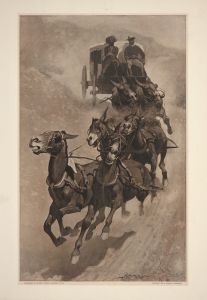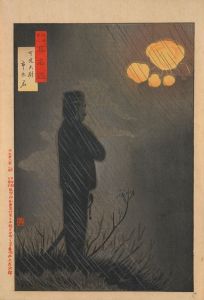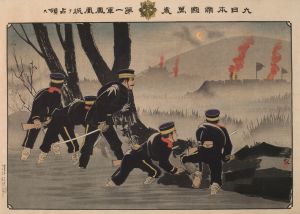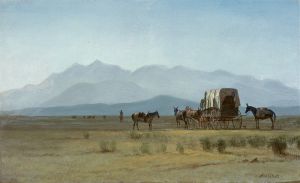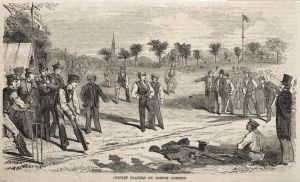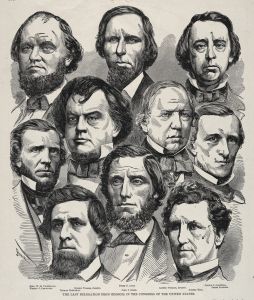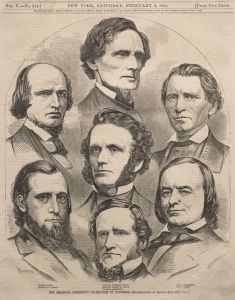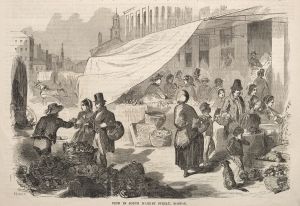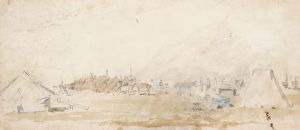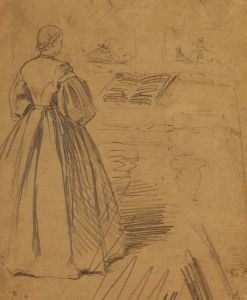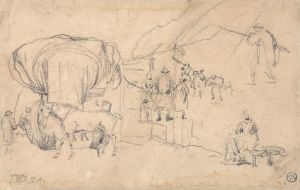
Army Wagon and Mule
A hand-painted replica of Winslow Homer’s masterpiece Army Wagon and Mule, meticulously crafted by professional artists to capture the true essence of the original. Each piece is created with museum-quality canvas and rare mineral pigments, carefully painted by experienced artists with delicate brushstrokes and rich, layered colors to perfectly recreate the texture of the original artwork. Unlike machine-printed reproductions, this hand-painted version brings the painting to life, infused with the artist’s emotions and skill in every stroke. Whether for personal collection or home decoration, it instantly elevates the artistic atmosphere of any space.
"Army Wagon and Mule" is a painting by the renowned American artist Winslow Homer, who is celebrated for his contributions to American art in the 19th century. Homer is particularly known for his realistic and vivid depictions of American life and landscapes, as well as his works that capture the essence of the Civil War era.
Winslow Homer was born on February 24, 1836, in Boston, Massachusetts. He began his career as a commercial illustrator and later transitioned to painting, where he gained recognition for his ability to portray the American experience with authenticity and emotional depth. His works often reflect themes of rural life, the sea, and the human condition, rendered with a keen eye for detail and a masterful use of light and shadow.
"Army Wagon and Mule" is one of the many works by Homer that depict scenes from the American Civil War, a subject he explored extensively during and after the conflict. The Civil War, which lasted from 1861 to 1865, was a pivotal event in American history, and artists like Homer played a crucial role in documenting its impact on the nation.
This particular painting, like many of Homer's wartime works, captures a moment of everyday life during the war. While specific details about the painting's creation, such as its exact date and location, are not widely documented, it is consistent with Homer's style during the early 1860s when he worked as an artist-correspondent for Harper's Weekly. During this time, Homer produced numerous illustrations and paintings that provided a visual record of the war, focusing on both the battlefield and the lives of soldiers and civilians.
"Army Wagon and Mule" likely depicts a scene involving military logistics, a crucial aspect of the war effort. The use of wagons and mules was essential for transporting supplies, equipment, and personnel across the varied and often challenging terrains encountered by both Union and Confederate forces. Homer's attention to detail and composition would have highlighted the practical realities of war, offering viewers insight into the less glamorous but vital components of military operations.
Homer's Civil War works are noted for their lack of overt heroism or romanticism, instead presenting a more grounded and sometimes somber view of the conflict. This approach set him apart from many of his contemporaries and contributed to his lasting legacy as a painter who captured the true essence of American life during a time of great upheaval.
After the war, Homer continued to develop his artistic style, eventually becoming one of the foremost landscape painters of his time. His post-war works often focused on themes of nature and human resilience, reflecting his deep connection to the American landscape and its people.
"Army Wagon and Mule" is a testament to Winslow Homer's skill as an artist and his ability to convey complex narratives through his art. While specific details about this painting may be limited, it remains an important part of his body of work that offers insight into the American Civil War and its impact on society.





